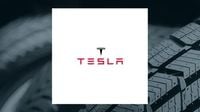Tesla’s stock has been on a wild ride over the past five years, and the story of its ups and downs has become a case study in both market enthusiasm and investor anxiety. As of August 25, 2025, Tesla (NASDAQ: TSLA) shares have soared more than 130% over the last five years and climbed over 40% in just the past twelve months, according to The Motley Fool. But those headline numbers mask a rollercoaster journey, with the stock plunging around 35% since its 52-week peak last December and having been down as much as 55% in April before staging a partial recovery.
It’s not just day traders feeling the heat. Institutional investors have also been adjusting their positions. New Harbor Financial Group LLC, for example, increased its stake in Tesla by a whopping 74.6% in the first quarter of 2025, bringing its total holdings to 3,444 shares, as reported in its most recent SEC filing. Tesla now represents about 0.2% of New Harbor’s portfolio, ranking as its 22nd largest holding. And it’s not alone—other major investors, including Rinkey Investments, True Wealth Design LLC, Aldebaran Financial Inc., Acorn Wealth Advisors LLC, and Solutions 4 Wealth Ltd, all boosted their Tesla holdings over the past two quarters, according to MarketBeat.
Despite the buying activity, the mood around Tesla remains cautious. The stock’s volatility has left many investors scratching their heads, wondering what’s next. As The Motley Fool puts it, “Which direction it might go next seems like little more than a coin toss.” The company’s valuation is a particular sticking point. Tesla’s forward price-to-earnings (P/E) ratio sits at a staggering 236, compared to the S&P 500’s already lofty 30. Even after its recent surge, that number is enough to make any value investor nervous.
By comparison, Chinese electric vehicle (EV) giant BYD, which recently overtook Tesla as the world’s top EV seller, trades at a much humbler forward P/E of 17—right in line with legacy automakers like Ford and Honda. That discrepancy has raised eyebrows. As The Motley Fool notes, “I really can’t see it being the cars” that justify Tesla’s sky-high valuation, especially since the company’s global EV sales have been declining, partly due to negativity surrounding CEO Elon Musk. Still, analysts are hopeful that sales will rebound as more affordable models hit the mainstream.
But it’s not just traditional car sales that have investors talking. Tesla’s much-hyped robotaxi business has generated significant buzz—and controversy. Cathie Wood of Ark Invest famously set a $2,600 price target for Tesla by 2029, arguing that nearly 90% of that valuation would be driven by the robotaxi segment. Yet the reality has been less than electrifying. The launch, after many delays, ended up as a limited demonstration for a handful of invited customers. According to The Motley Fool, Tesla has “over-promised and under-delivered” on self-driving technology, while competitors have made more visible progress.
So, what’s keeping investors interested? For some, it’s the promise of future breakthroughs. Tesla’s foundation in battery technology, robotics, and artificial intelligence (AI) remains impressive, and there’s hope that these strengths will eventually translate into new products and revenue streams. As The Motley Fool puts it, “Those taking the risk today might do well,” but for now, Tesla feels like a “jam tomorrow” investment—one where the payoff is always just around the corner, but never quite here.
On Wall Street, analysts are divided. According to MarketBeat, one analyst has issued a Strong Buy rating, 17 have issued Buy ratings, 15 have issued Hold ratings, and nine have given Sell ratings. The consensus? “Hold,” with an average target price of $303.31—below where the stock traded late last week. Robert W. Baird reissued a neutral rating with a $320 price target, while Royal Bank of Canada and Piper Sandler both reaffirmed overweight ratings with targets of $320 and $400, respectively. Guggenheim, on the other hand, maintained a sell rating and a $175 target, and Benchmark bumped its buy target up to $475.
It’s not just the analysts who are hedging their bets. Tesla’s own insiders have been selling shares. Director Kimbal Musk sold 91,588 shares on May 27, 2025, at an average price of $357.39, netting over $32 million. CFO Vaibhav Taneja sold 2,000 shares at $300 apiece in July. In total, insiders have unloaded nearly 600,000 shares worth over $213 million in the past 90 days. As of late August, insiders still held about 20.7% of the company, while institutional investors controlled 66.2%.
Financially, the latest quarterly results were a mixed bag. Tesla reported earnings per share (EPS) of $0.40 for the quarter ending July 23, 2025, missing the consensus estimate of $0.43. Revenue came in at $22.5 billion, short of the $23.18 billion forecast. Perhaps more worrying for some, revenue was down 11.8% compared to the same quarter a year ago, and net margin stood at 6.54% with a return on equity of 7.98%. The company’s quick ratio was 1.55, current ratio 2.04, and debt-to-equity ratio a conservative 0.07—numbers that suggest stability, if not spectacular growth.
At the close of trading on August 22, Tesla shares stood at $340.01, up $19.90 for the day, with a trading volume of 93.4 million shares—well above the average. The stock’s 12-month low was $202.59, and its high was $488.54. The market capitalization hovered at $1.10 trillion, with a P/E ratio of 196.54 and a P/E/G ratio of 11.82. The 50-day simple moving average was $321.27, and the 200-day average was $302.58, reflecting the stock’s recent rebound from its April lows.
What’s next for Tesla? The company continues to operate in two main segments: Automotive and Energy Generation and Storage. The automotive side includes not just EVs, but also regulatory credits, after-sales services, used vehicles, supercharging, retail merchandise, and even vehicle insurance. The energy segment covers everything from solar panels to battery storage systems. It’s a sprawling business—one that’s both a strength and a source of uncertainty.
For now, investors face a familiar dilemma: bet on Tesla’s future innovations or wait for clearer signs that the company’s promises will translate into profits. The company’s story is far from over, but the next chapter remains unwritten. With volatility the only constant, Tesla’s journey is one that demands both nerves of steel and a healthy respect for risk.




